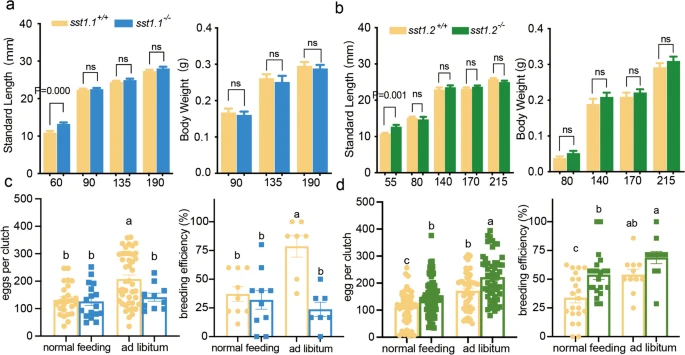Fig. 1 Growth, fecundity and breeding efficiency of sst1.1 and sst1.2 deficient zebrafish and their wild-type siblings. a sst1.1+/+ and sst1.1−/− linear and ponderal growth (n=23 to 32 per time point) under normal feeding showing the mutants significantly longer than wild-type only at 60 days. b sst1.2+/+ and sst1.2−/− linear and ponderal growth (n=22 to 34 per time point) under normal feeding showing the mutants significantly longer than wild-type only at 55 days. c Left, the number of eggs per clutch spawned every 3–5 days by sst1.1+/+ and sst1.1−/− zebrafish under normal and ad libitum feeding, with mutants fed ad libitum spawning significantly fewer eggs than wild type; Right, Breeding efficiency of sst1.1+/+ and sst1.1−/− zebrafish under normal and ad libitum feeding, with mutants fed ad libitum having significantly lower breeding efficiency than wild type. d Left, number of eggs per clutch spawned every 3-5 days by sst1.2+/+ and sst1.2−/− zebrafish under normal and ad libitum feeding, with mutants under normal and ad libitum feeding spawning significantly more eggs than wild type; Right, Breeding efficiency under normal and ad libitum feeding with mutants under normal and ad libitum feeding having significantly higher breeding efficiency than wild type. Data are shown as mean ± standard error of the mean
Image
Figure Caption
Acknowledgments
This image is the copyrighted work of the attributed author or publisher, and
ZFIN has permission only to display this image to its users.
Additional permissions should be obtained from the applicable author or publisher of the image.
Full text @ BMC Biol.

